AI System for Kidney Tumor Classification
An innovative solution combining artificial intelligence with medical imaging for more accurate identification of benign and malignant kidney tumors, reducing the need for unnecessary surgeries.
Overview
In collaboration with the medical team at Sheba Medical Center, we developed an AI-based system that assists in diagnosing kidney tumors. The main goal was to improve diagnostic accuracy, particularly in correctly identifying benign tumors to reduce the need for unnecessary surgical procedures.
The central challenge was to address a significant imbalance in the existing database, where only 8.1% of cases were benign tumors. To overcome this challenge, we developed an innovative data enrichment method that utilizes 2D slices from all three anatomical planes of CT scans, using intelligent selection techniques that maximized tumor information.
The result was an efficient classification system capable of identifying benign tumors with high accuracy, allowing physicians to make more informed decisions about the need for surgery. The project demonstrates the potential of AI technologies to improve medical outcomes and quality of life while reducing costs and unnecessary medical interventions.
The Challenge: Data Imbalance in Medical Records
When developing AI systems for medical applications, data quality is critical. In the case of kidney tumor classification, we encountered a significant challenge: out of 210 cases in the KiTS19 database, only 17 cases (8.1%) were benign tumors, while the rest - 193 cases (91.9%) - were malignant tumors.
This imbalance poses a significant challenge for several reasons:
- Learning models tend to favor the larger group (in this case, malignant tumors)
- They might achieve seemingly impressive accuracy (over 90%) simply by classifying all cases as malignant
- Identifying benign tumors (the minority) is actually the most important task clinically, as it can prevent unnecessary surgeries
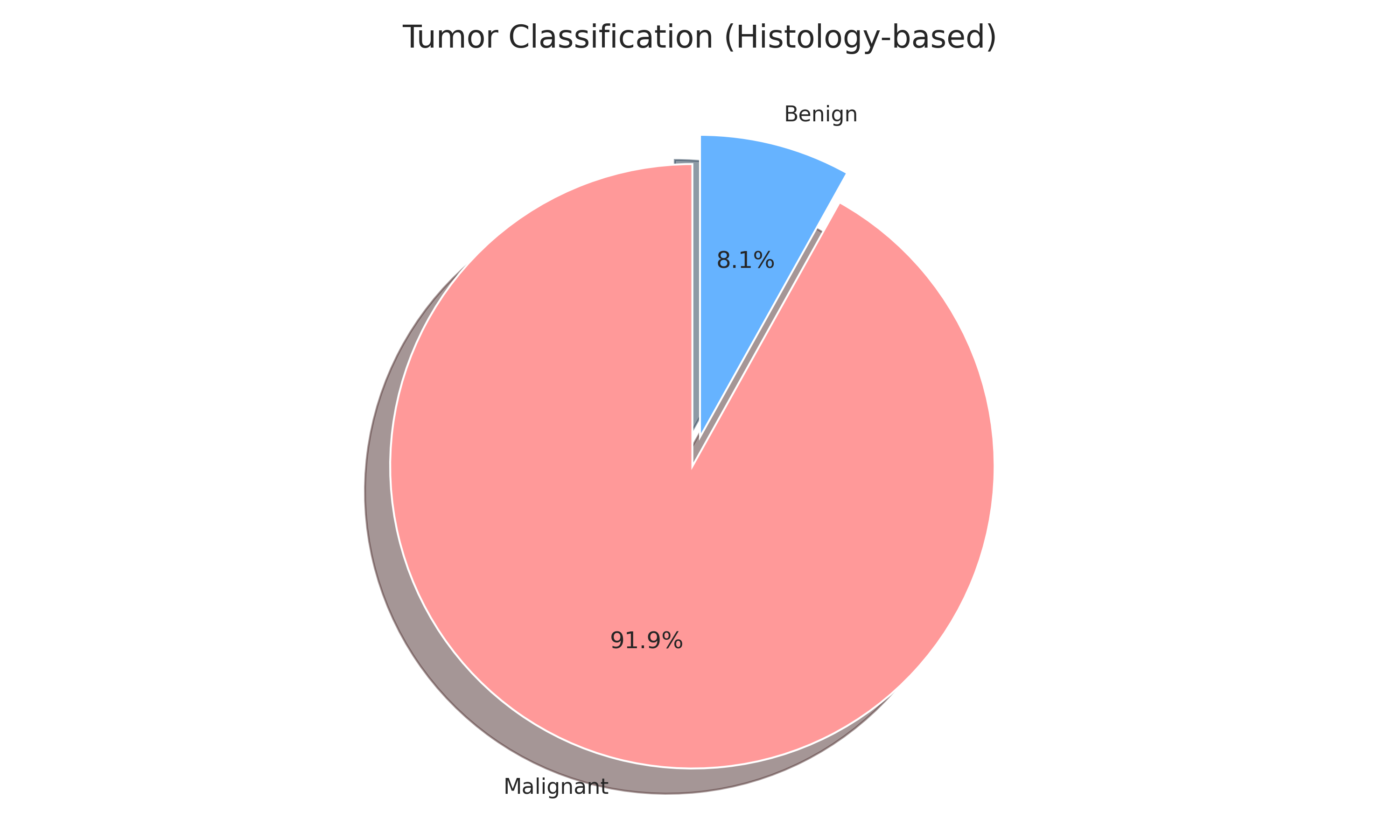
Additionally, using complete 3D volumes as input to the model would exacerbate the imbalance problem, since each case provides only one training example - without improving the 8:92 ratio between cases.
The Solution: Smart Multi-Angle 2D Image Slicing
Instead of using the traditional approach of 3D volumes, we developed an innovative method based on 2D slices from multiple anatomical angles:
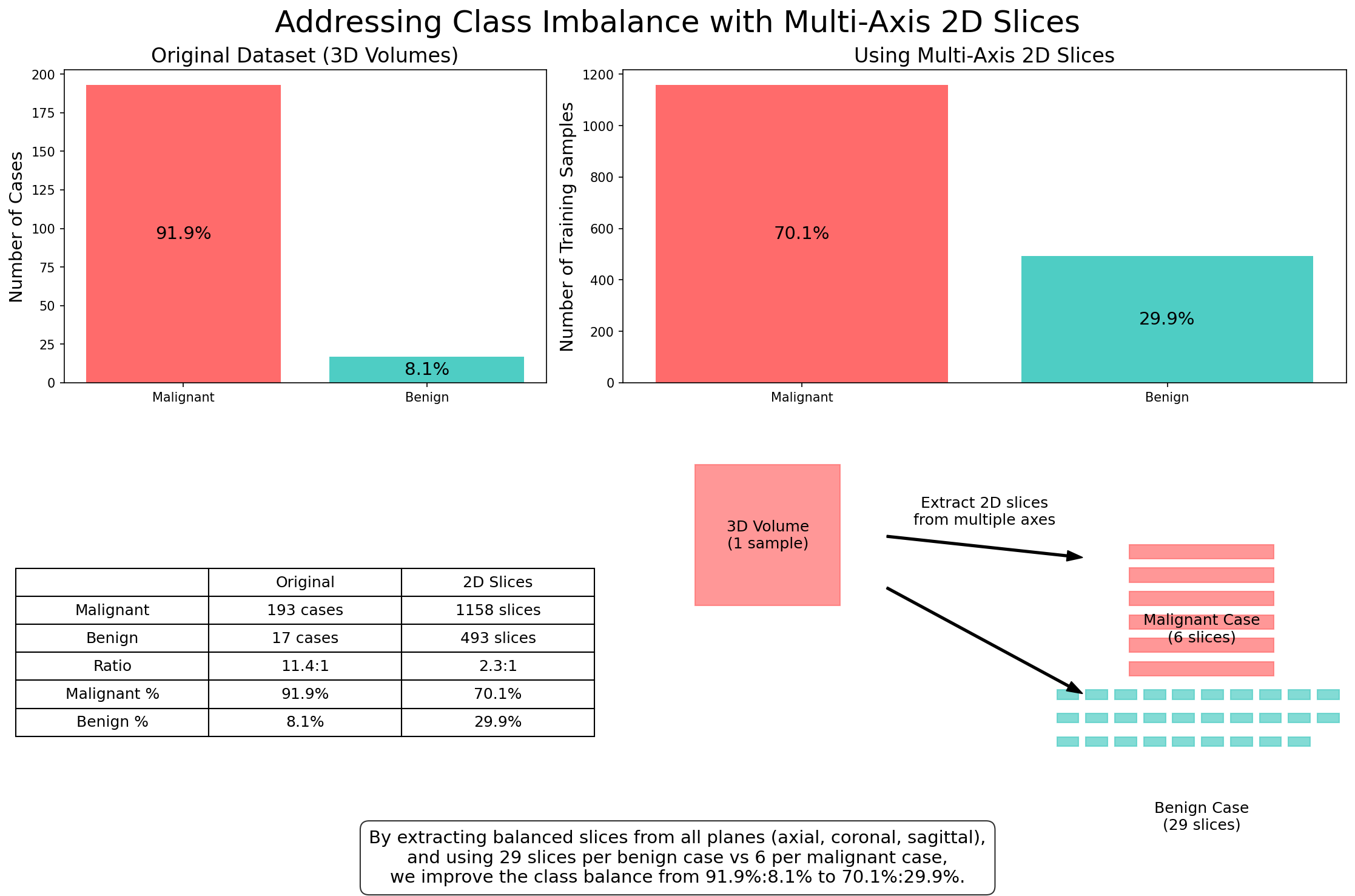
Our approach included several innovative components:
- Sampling from three anatomical angles: Instead of relying only on axial slices (horizontal), we added slices in the coronal (frontal) and sagittal (lateral) planes, which enriched the variety of information the model can learn from.
- Customized sampling ratios: We sampled more slices from benign cases (29 slices from each benign case versus 6 slices from each malignant case), which increased the representation of benign cases from 8% to 30%.
- Preservation of anatomical dimensions: We developed algorithms that account for voxel spacing in 3D images to preserve the correct anatomical relationships in all planes.
- Intelligent slice selection: Instead of choosing slices randomly, our algorithm ranks slices by the area of the tumor visible in them, and selects the slices containing the most significant information.
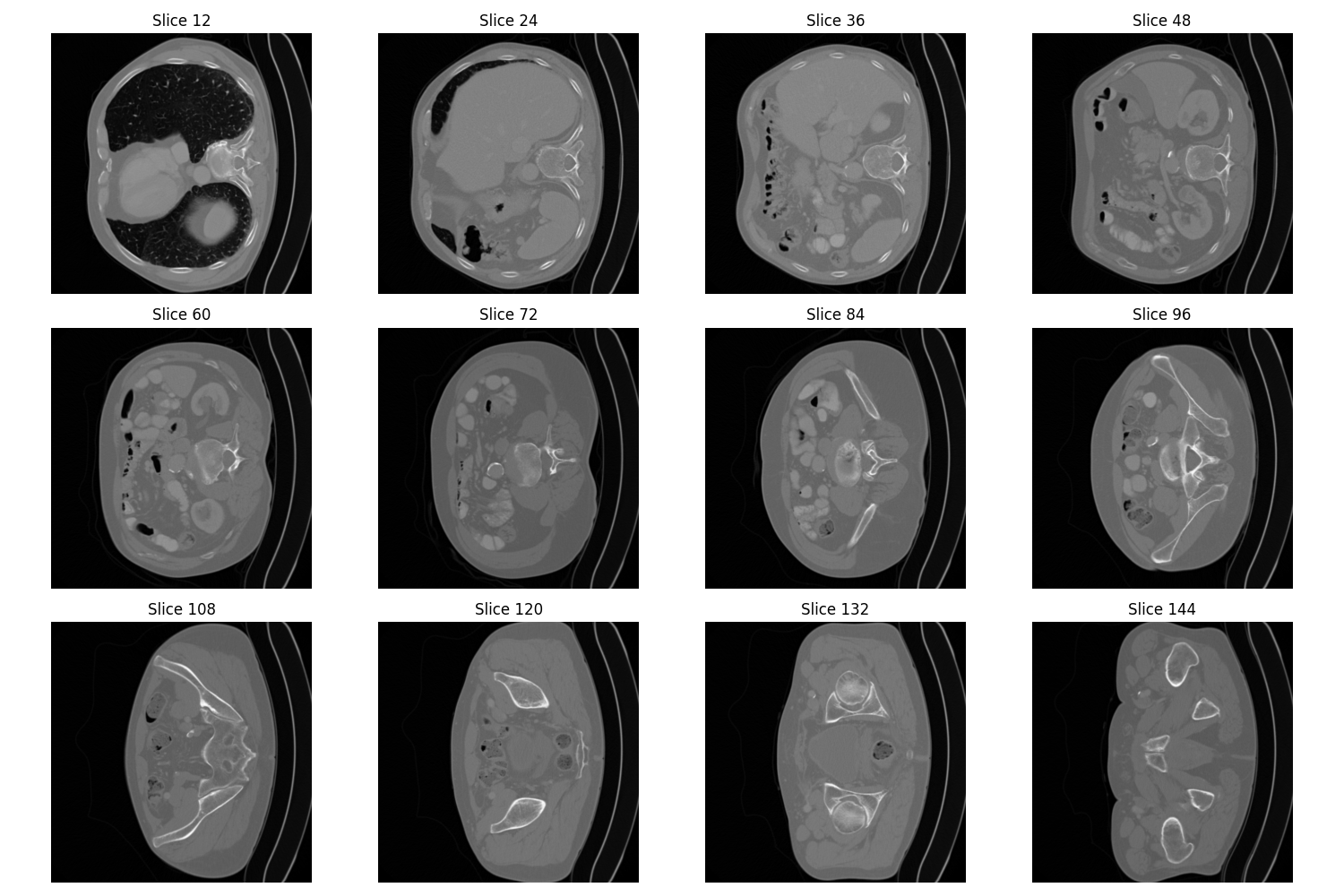

An additional advantage of our approach is that it provides the model with more diverse examples, showing tumors from different angles and enriching the information available for learning. This is analogous to training radiologists, who learn to identify diagnostic signs from different viewing angles.
3D vs. 2D Visualization: Why It Matters
Traditional approaches to kidney tumor classification often rely solely on 3D volume analysis, which presents challenges for machine learning models, especially with limited data. Our innovative method transforms 3D information into optimally selected 2D slices, providing more training examples while preserving critical diagnostic information.
The diagram to the right illustrates how our approach extracts the most relevant 2D slices from a 3D volume, optimizing both the quantity and quality of training data.
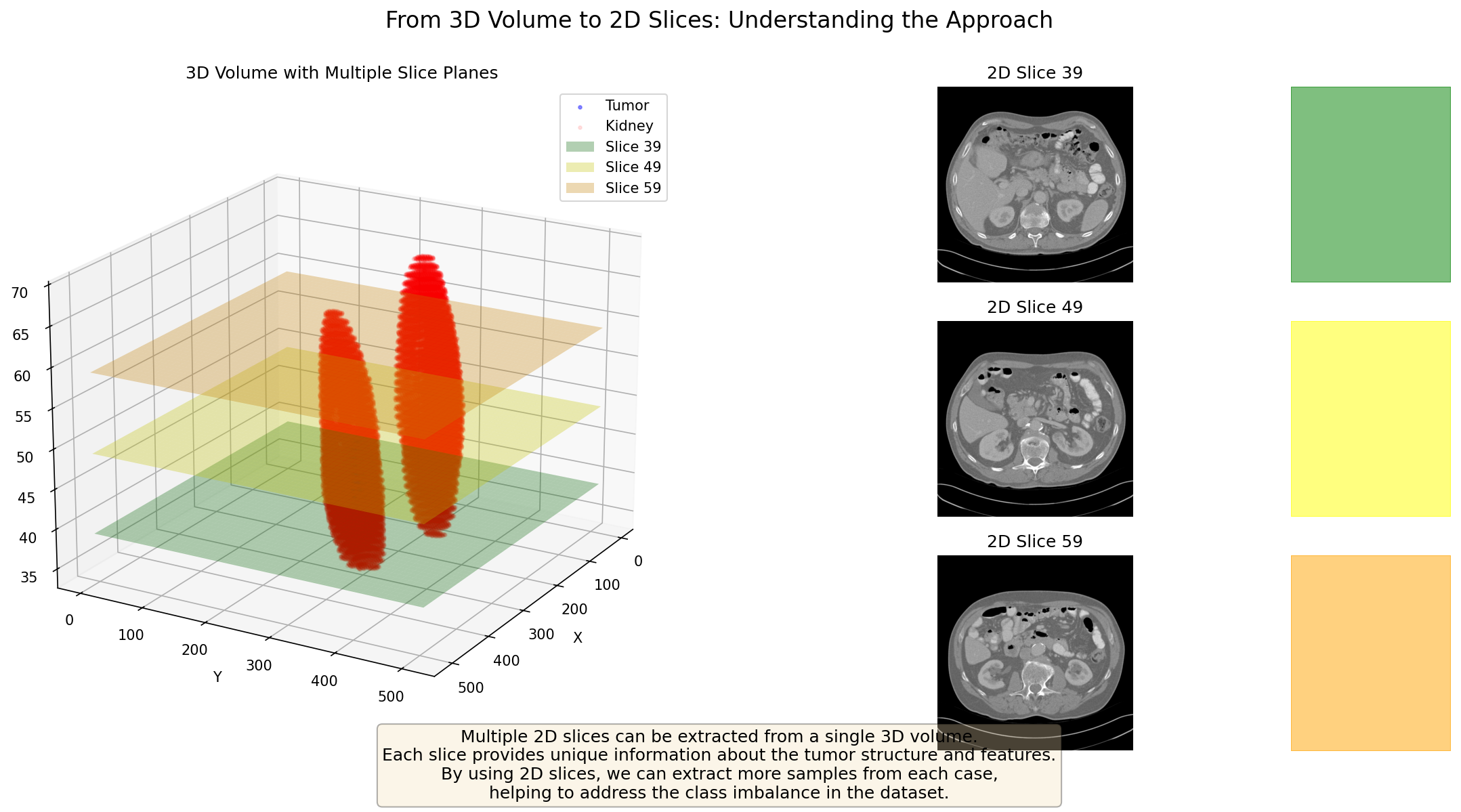
The animation above demonstrates how a 3D representation allows us to understand the full spatial characteristics of a malignant kidney tumor. The complex, irregular structure and heterogeneous appearance are typical characteristics of malignant growths.
This animation shows the 3D representation of a benign kidney tumor, which typically has more well-defined boundaries, smoother surfaces, and more homogeneous internal structure compared to malignant tumors. These 3D characteristics need to be effectively captured in 2D slices for model training.
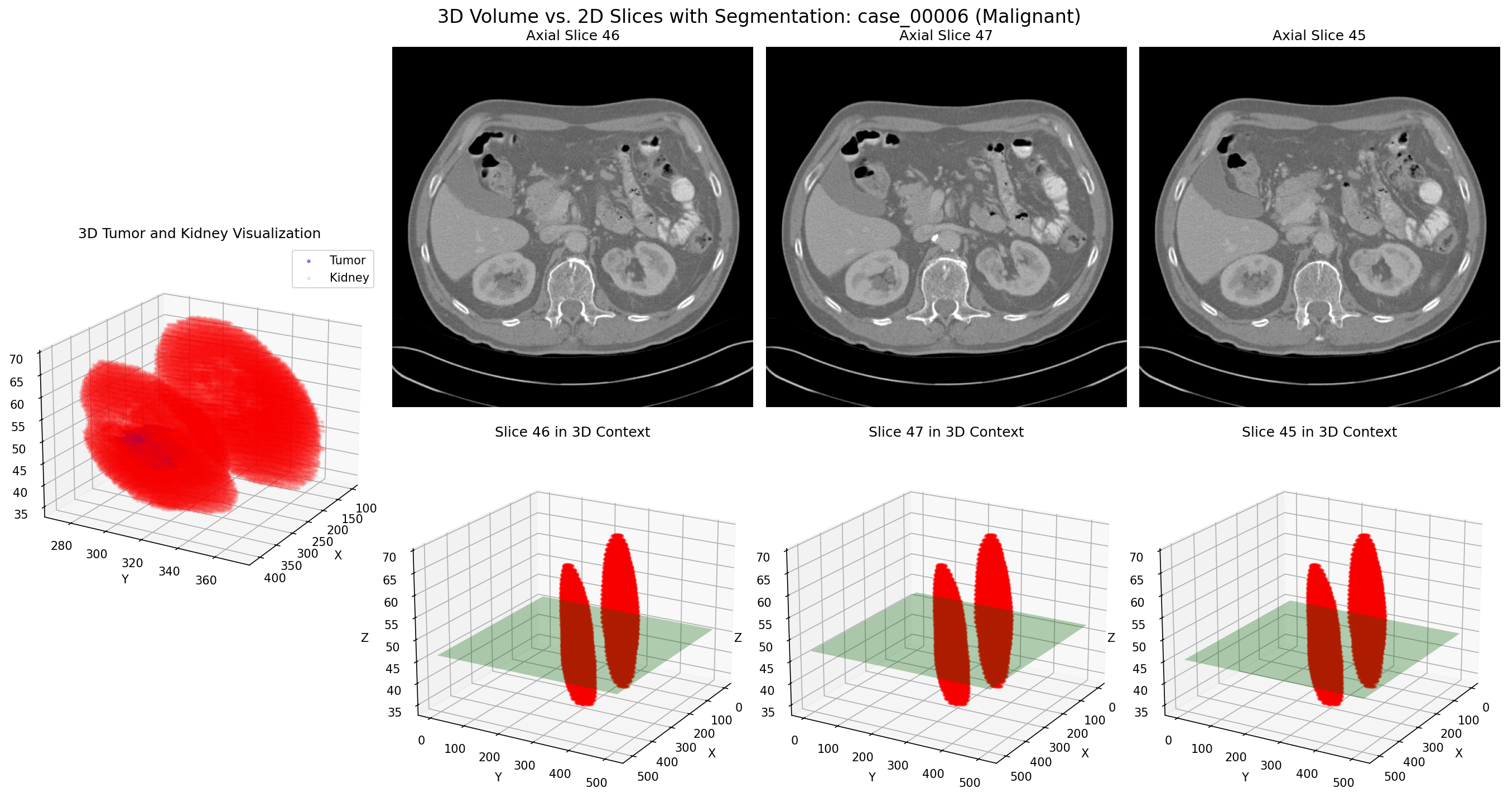
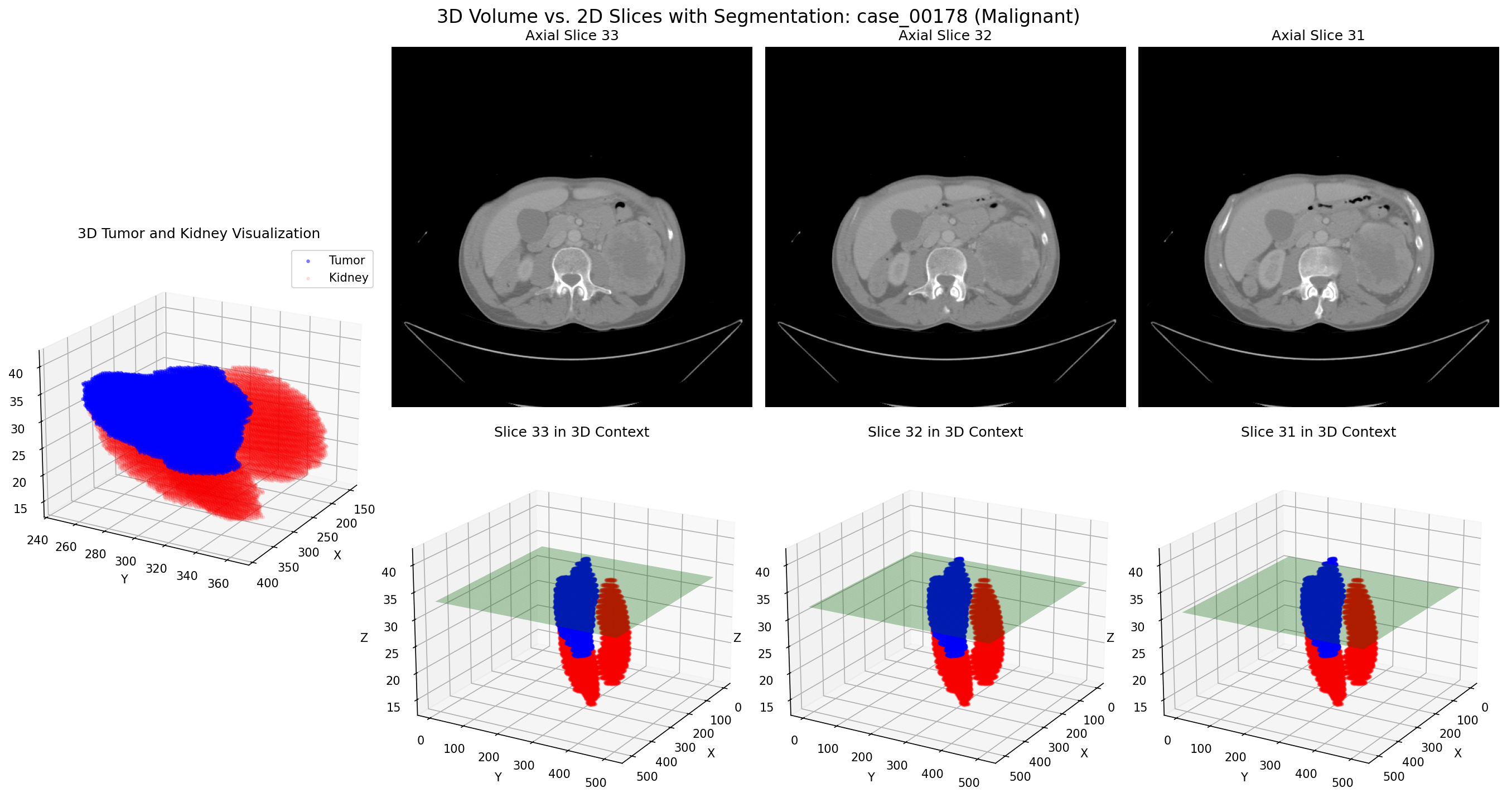
These side-by-side comparisons show the relationship between 3D tumor volumes (top row) and their corresponding 2D slices (bottom row) for both malignant and benign cases. Our algorithm intelligently selects the most informative 2D slices from each 3D volume, capturing the key diagnostic features while generating multiple training examples from a single case.
Key insight: By converting each 3D case into multiple 2D slices, we effectively increased our training data by a factor of 8-10, with each slice carrying distinct morphological information about the tumor.
The comparison above highlights the differences between malignant (left) and benign (right) kidney tumors in 3D. Benign tumors often display more regular, well-defined boundaries and more uniform internal composition, while malignant tumors typically show irregular borders, heterogeneous internal structure, and may invade surrounding tissues.
Intelligent Slice Selection Method
We developed a unique algorithm that optimizes the selection of 2D slices for model training:
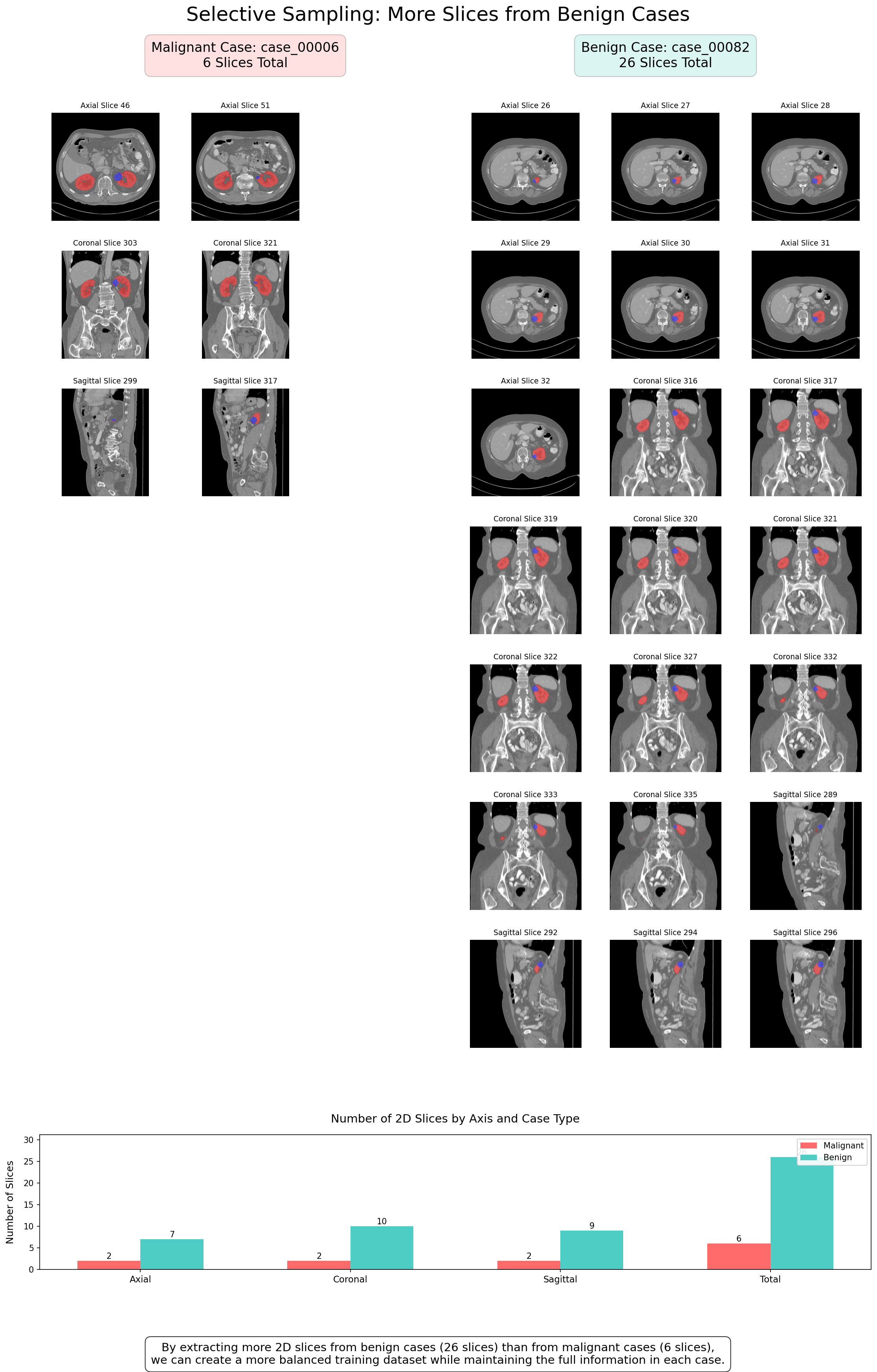
- Ranking by tumor area: The algorithm computes the area of the tumor visible in each slice, and ranks the slices according to this metric.
- Selection of diverse slices: Instead of selecting only slices with the largest tumor area, the algorithm chooses slices distributed throughout the tumor, to represent its full 3D structure.
- Balance between planes: A balanced selection of slices from all anatomical planes is performed, providing complementary information to the model.
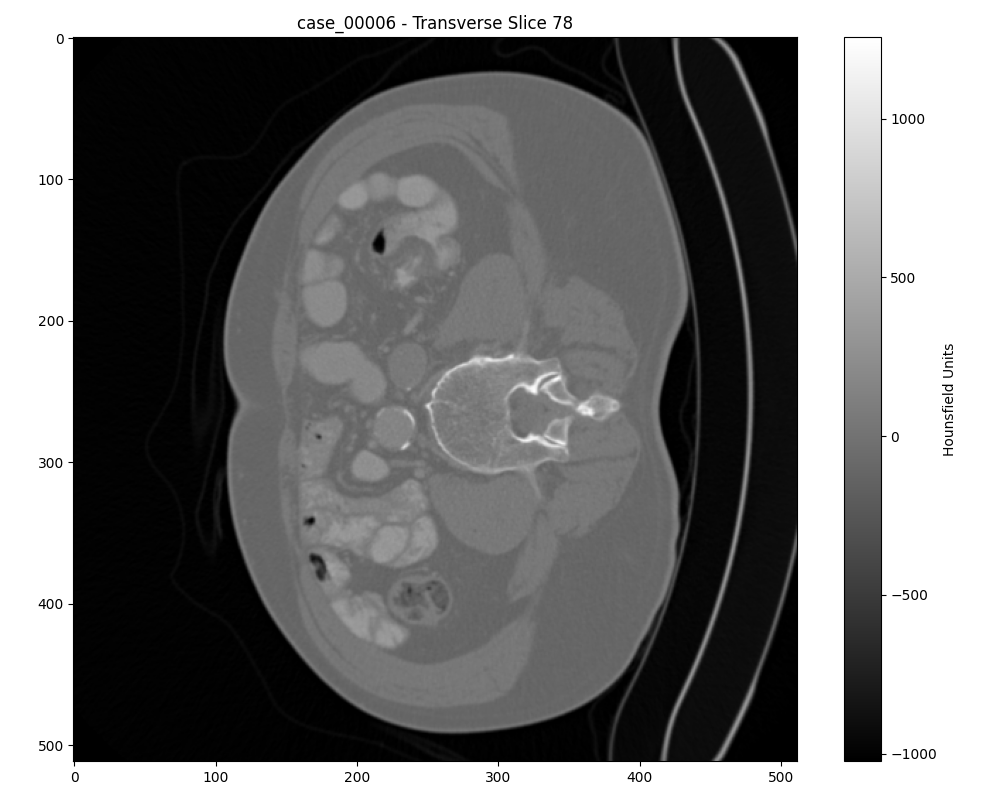
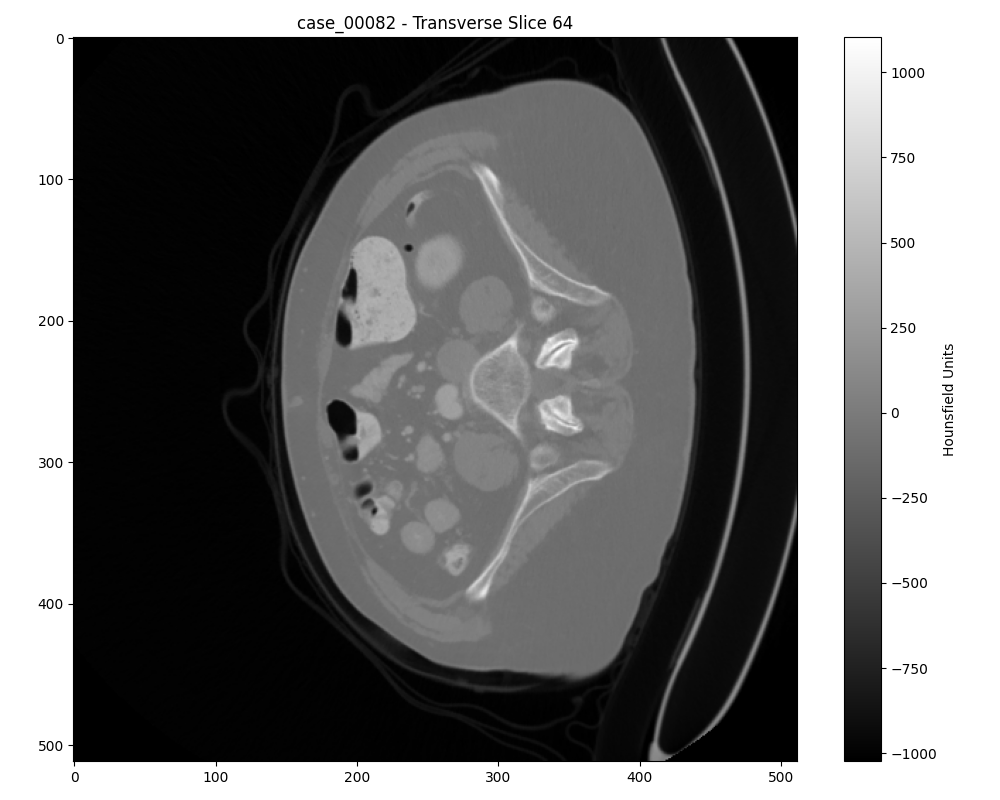
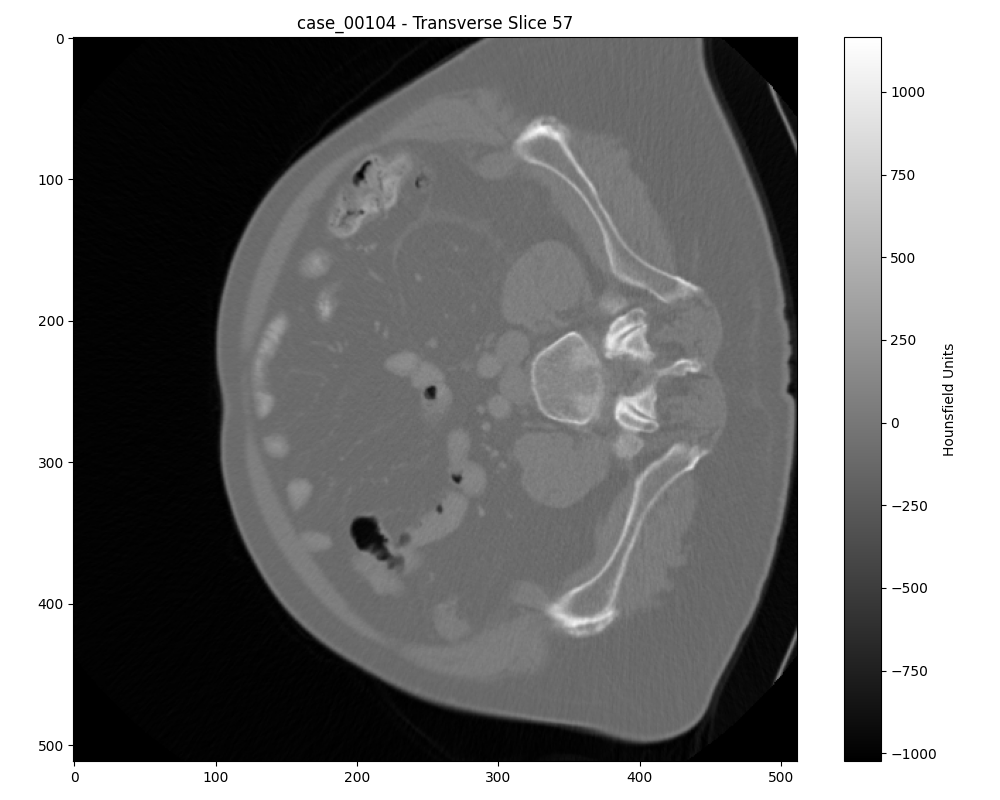
This approach ensures that the model learns from the most information-rich examples, rather than random slices that might contain very little relevant information or not even show the tumor at all.
Results and Benefits
Our innovative 3D-to-2D transformation method led to several significant achievements:

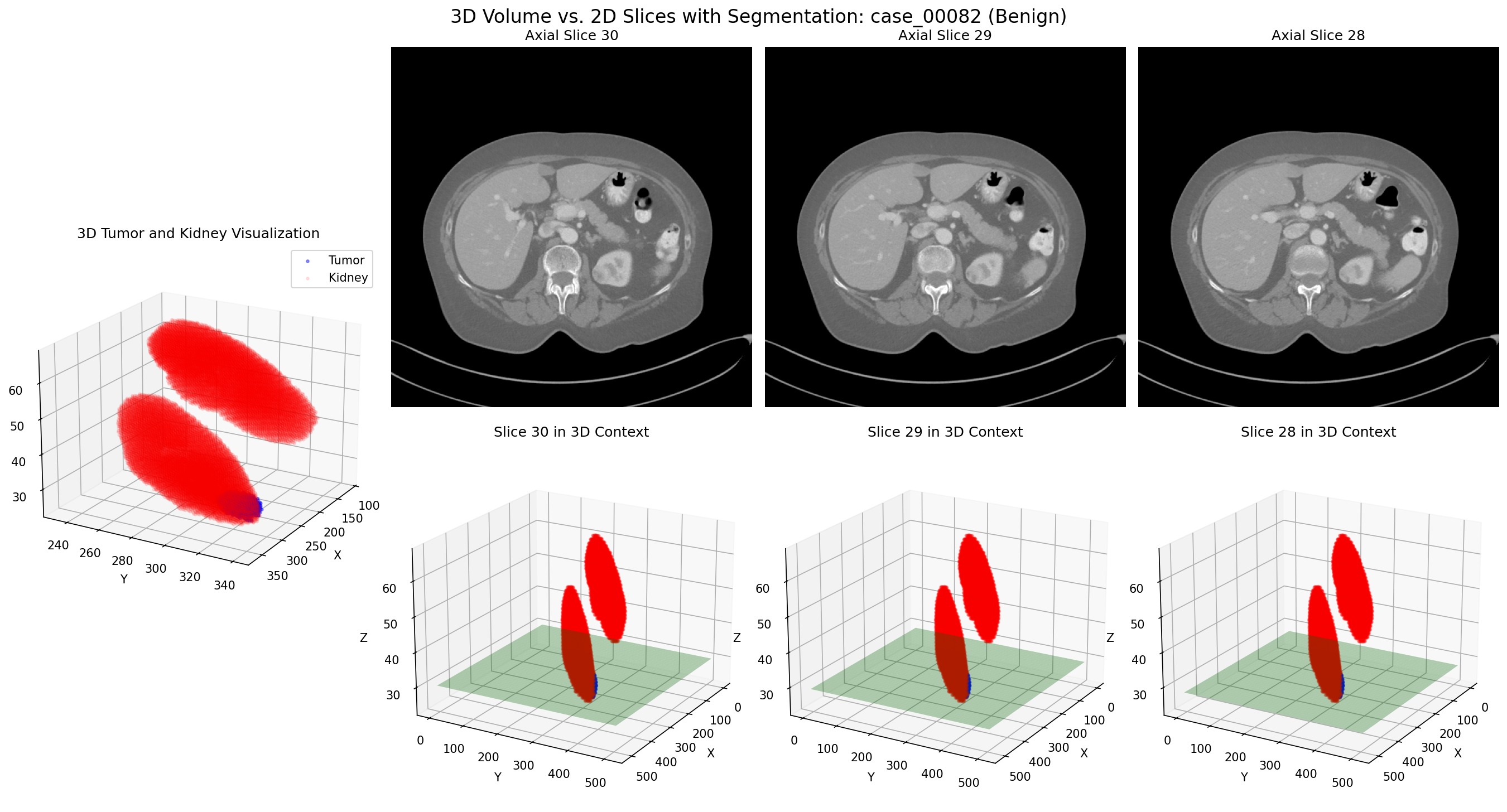
The potential clinical benefits of our system include:
- Reduction of unnecessary surgeries: More accurate identification of benign tumors reduces the need for unnecessary surgical interventions.
- Cost savings: Reducing unnecessary medical procedures saves valuable resources for the healthcare system.
- Improved quality of life for patients: Patients with benign tumors can avoid surgery and long recovery times.
- More informed medical decisions: The tool provides physicians with additional information to support their clinical decisions.
- Resource optimization: The 2D approach requires less computational resources than full 3D analysis, making deployment more feasible in clinical settings.
- Interpretability: 2D slices provide greater interpretability for radiologists, as they align with traditional diagnostic workflows.
The 3D vs. 2D approach represents a significant advancement in medical image analysis, balancing the comprehensive nature of 3D data with the practicality and efficiency of 2D analysis.
It is important to note that the system is presented as a decision support tool for physicians, not as a replacement for medical judgment. It provides an additional probability assessment that can assist in the diagnostic process.
Interested in a Custom AI Solution for Your Medical Challenges?
We specialize in developing AI systems for the medical field that combine technological innovation with a deep understanding of clinical needs. Let's create a solution together that will improve diagnosis, treatment, and quality of life for patients.
Contact Us Today